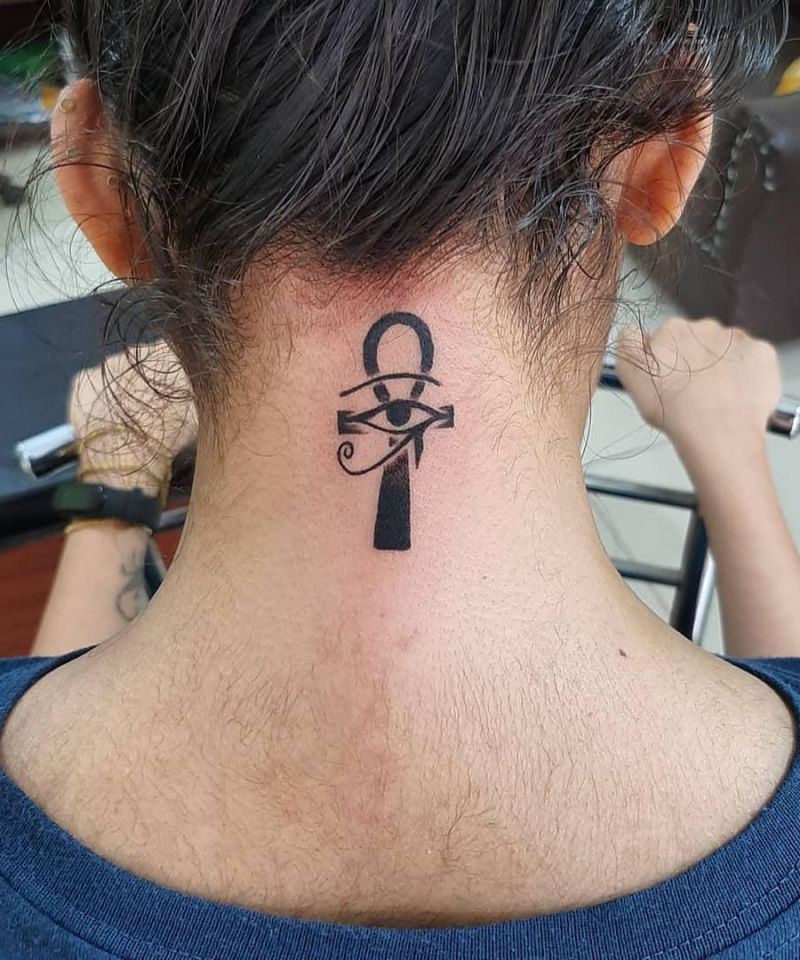In ancient Egyptian symbols and hieroglyphs, the Ankh is a symbol of life. Shaped like a cross with a ring-shaped head, it is usually considered to represent sandals or male roots. The ankh is still common in Egyptian Christian churches, and they call it the crux ansata.
In ancient Egyptian temples, the “reproduction” meaning of the Ankh pattern is closely related to the Pharaoh. In alleviating the pain of the Amarna stage, it is emphasized. In ancient Egyptian paintings, the tail of some sunlight is the symbol of ankh, pointing directly to the nose of Pharaoh Akhenaten and his wife nafti. This sacrifice to the noble nostrils is called “the breath of life”.

Source: @34inkredibletattoo